Roald Dahl Day – Splendiferous school activities for 2025
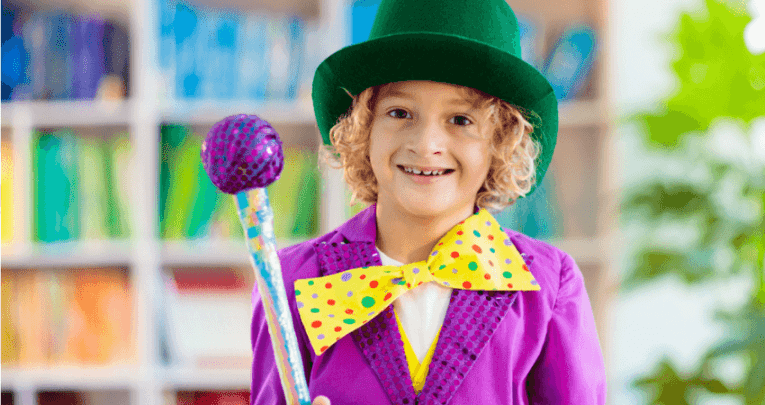
Delve into these phizz-whizzing activities to delight your class, from marvellous melting science, to squibbling your own Dahl-esque stories…

- by Teachwire
- Classroom expertise and free resources for teachers

If Roald Dahl taught us one thing as readers, it’s that ‘no book ever ends if it’s full of your friends,’ (The Giraffe and The Pelly and Me). Join us to celebrate Roald Dahl Day this September.
Whether you want to adventure with your class around the world’s greatest chocolate factory, mischievously manufacture marvellous medicines, or voyage on a giant peach, it’s a razztwizzler of a day to enjoy Roald Dahl’s books and characters.
Table of contents
What is Roald Dahl Day?
Roald Dahl Day, recently renamed Roald Dahl Story Day, celebrates the author’s characters, stories and worlds.
With over 200 million copies of his books sold worldwide and many of his stories adapted for stage and screen, there is a lot to enjoy and celebrate!
When is Roald Dahl Day?
Roald Dahl Day 2025 is officially held on 13th September, Roald Dahl’s birthday. These activities would also be good for International Literacy Day, which is also in September.
Roald Dahl resources
Roald Dahl Ultimate Primary Resource Pack
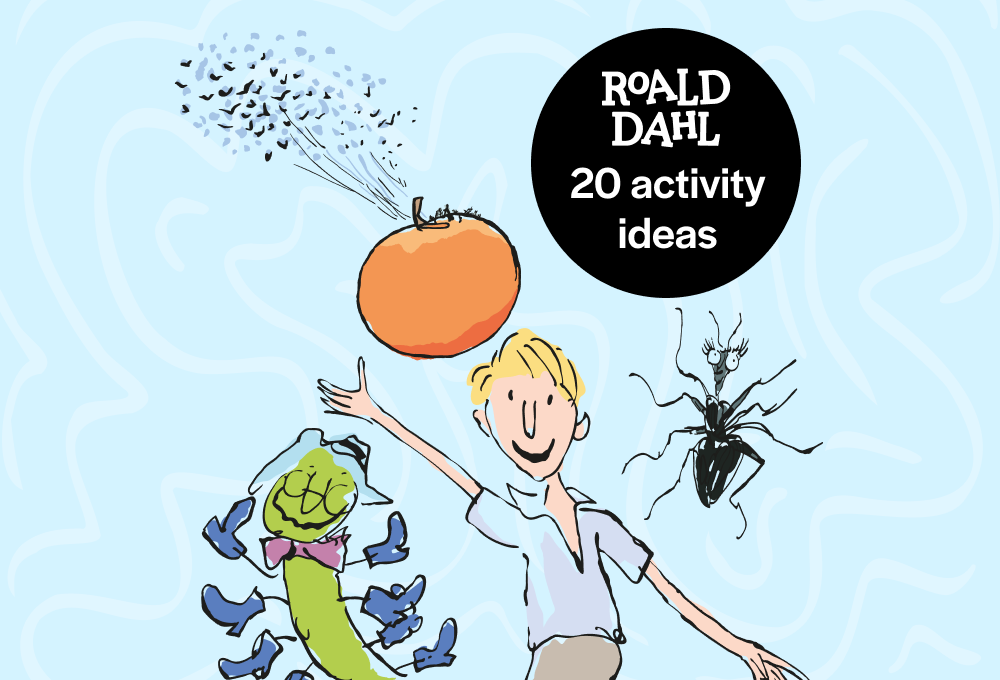
Dahl’s books are a staple of many primary classrooms. In this free Roald Dahl Ultimate Primary Resource Pack you’ll find lesson plans for English, PSHE, art and much more. They’re all inspired by Dahl’s scrumdiddlyumptious stories.
Roald Dahl Matilda Lesson Pack
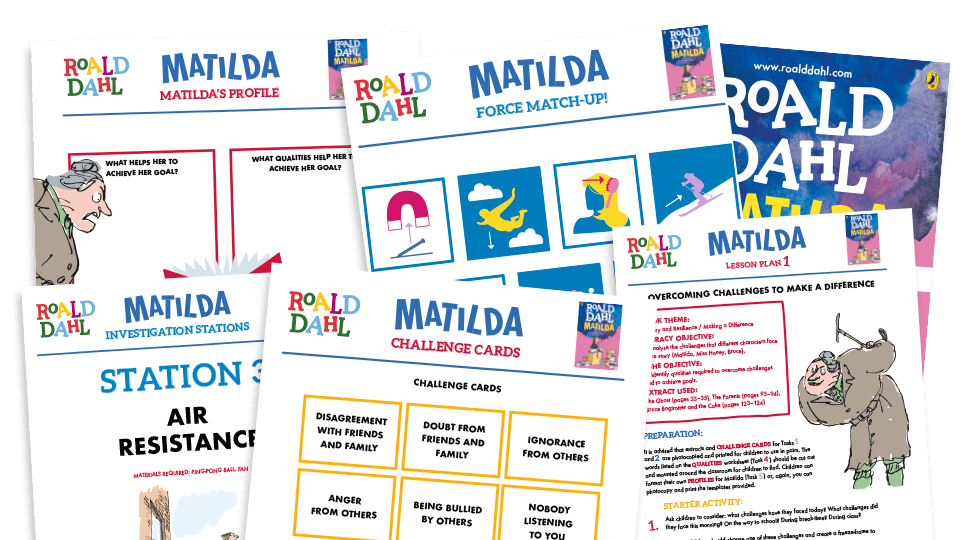
This lovely pack of six free lesson plans from The Roald Dahl Story Company covers areas from across the primary curriculum. This includes PSHE, literacy, science, D&T, geography, maths and literacy.
Each lesson has two main learning objectives. You also get all the resources you need to deliver the activities. This includes discussion cards, text extracts and writing templates.
Roald Dahl assembly
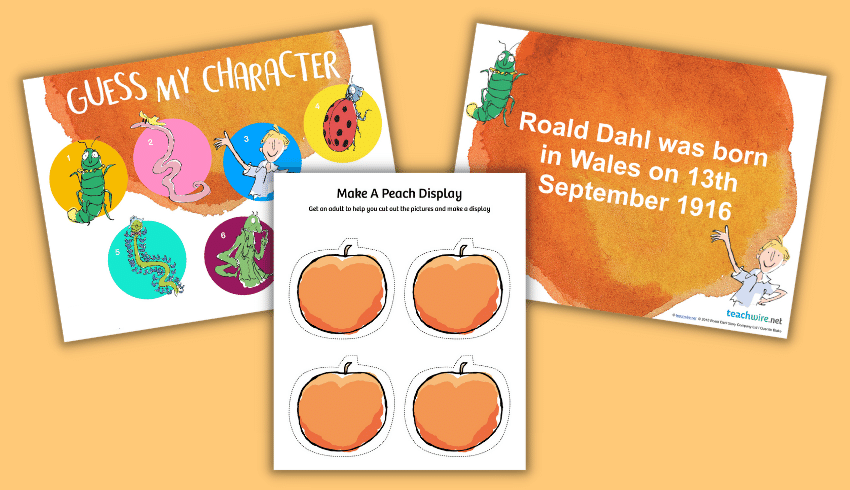
If you need a way to inject some whizz, pop and bang into your Roald Dahl Day celebrations, this assembly idea by Birmingham teacher Abby King could be just what you’re looking for.
The theme for the assembly is teamwork, although it could be easily adapted to focus on friendship or perseverance instead.
It is based around James and the Giant Peach, so it will help to maximise its impact if the children are already familiar with the story.
Host a debate
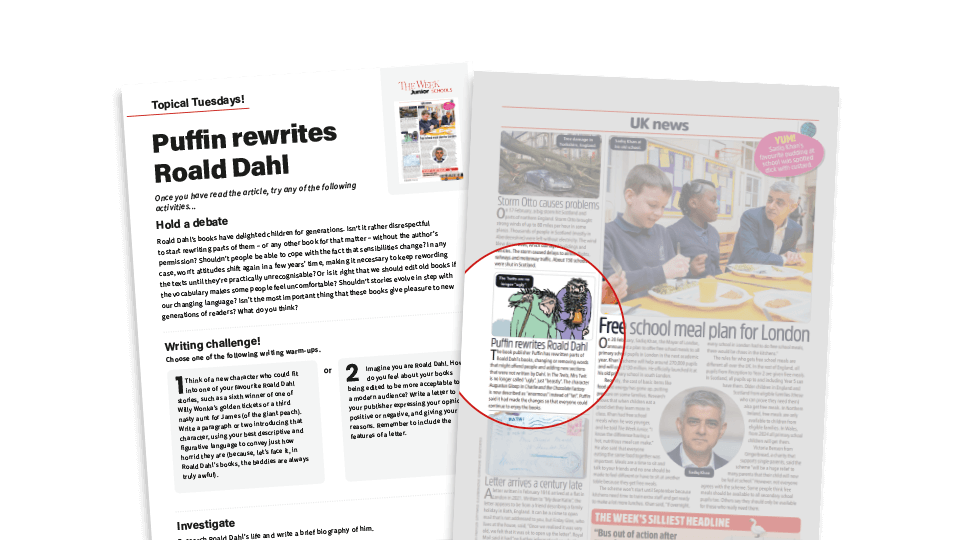
In early 2023, the book publisher Puffin released rewritten Roald Dahl books. Words that might offend people were changed or removed, and some new sections were added.
Use this free resources pack from Plazoom, which includes an article from The Week Junior magazine, to get children thinking, talking and writing about what the story means to them.
Dress up for Roald Dahl Day
This year, Roald Dahl’s Marvellous Children’s Charity is encouraging schools to host a dress up day to raise money for the charity. It concentrates on funding Roald Dahl Specialist Nurses for seriously ill children.
Roald Dahl facts

Did you and your class know these fascinating facts about Mr Dahl’s marvellous world?
- Roald Dahl had many jobs including being a fighter pilot in World War Two and working as a spy. He also spent six months recovering from a plane crash in an Egyptian hospital.
- As well as writing some of the most celebrated and successful children’s books of all time, Roald Dahl also worked on the film Chitty, Chitty, Bang, Bang and on the James Bond franchise.
- Sadly, Roald Dahl had a very tragic childhood. This included the deaths of both his sister and father before he left primary school.
- Roald Dahl was a chocolate taster during his time at school. Do you think that inspired him to write Charlie and the Chocolate Factory?
- He isn’t just a pioneer of words. The author was also a pioneer in the field of medicine, too. This included co-writing a guide to stroke recovery and designing a valve for hydrocephalus.
Charlie and the Chocolate Factory ideas
There are lots of reasons to use Charlie and the Chocolate Factory in the classroom, not least because of the 2023 Wonka movie.
Here, KS2 and curriculum leader Adam Jevons-Newman from Farmilo Primary School and Nursery shares swashboggling ways you might celebrate Roald Dahl’s books and characters in 2024.
Create a new character
The best-selling of all Roald Dahl’s books, Charlie and the Chocolate Factory is a beloved tale.
In the build-up to Roald Dahl day, why not dive into Wonka’s factory and celebrate by finding your own Golden Tickets and joining the tour?
This writing project is underpinned by three key concepts:
- Creating a character
- Devising a fantastical sweet or chocolate
- Deciding what goes wrong (plot twist!)
To begin with, reflect on the different Golden Ticket winners in Charlie and the Chocolate Factory. Roald Dahl presents us with quite a cast of characters from the noble and kind Charlie Bucket to the greedy Augustus Gloop.
In creating their own character, children can be supported to delve deeply into their personalities – their motivations, their habits, how they come to win the golden ticket, their strengths and fears and wildest dreams.
All of these ideas help to decide the ultimate outcome for these characters.
One great way to explore character is through dialogue and the way in which characters interact and engage with one another.
How Mr Wonka talks to the characters in his factory reflects upon those characters, including the sort of person we understand Mr Wonka to be.
Exploring characterisation
As part of devising their own story, children can explore characterisation by creating an interaction between Mr Wonka and their new character.

Devise a new chocolate
Then, it’s time to think scrumdiddylumptiously; not only are we going to devise a new chocolate but just like Everlasting Gobstoppers, it’ll have its own special property too.
Perhaps a football-shaped chocolate that makes you as good as Beth Mead? Is it edible shoelaces that give you extra speed on sports day?
Let your imaginations run wild and dive into discussion – use lots of open questioning as a class to draw on the broadest range of ideas, asking things like:
- What would happen if you ate it?
- What do children want to succeed at?
- How would it work?
- What would it taste like?
- How can we make it more unexpected?
- If it went wrong… how would you fix it?
The aim of this activity is to develop the most unusual and exciting ideas for sweets and chocolates.
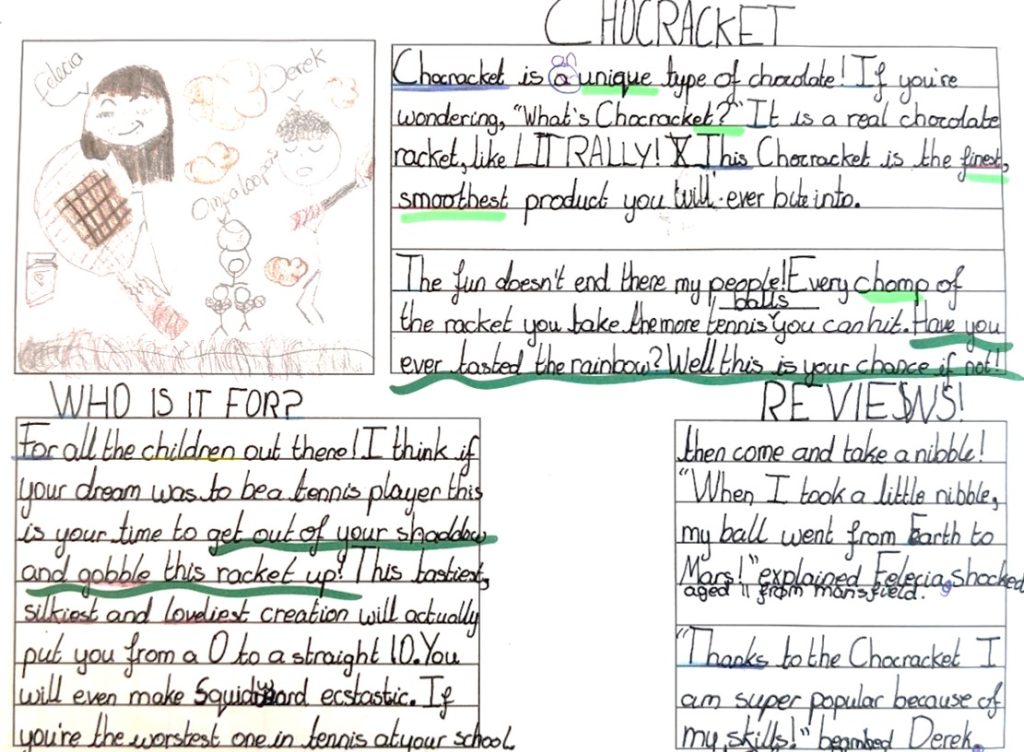
How do things go wrong?
Finally, before telling their story just like Roald Dahl himself, think about what goes wrong. Make sure pupils link their chosen disaster to the sweet item they’ve created, because as Mr Wonka would say, ‘it’s still not quite right’…but how?
If they’ve devised something which promises to make you better at something, maybe children should think about the consequences of this and how it could backfire on them.
For instance, should a chocolate make you better at maths, or does hard work do that… is there a moral here?
And what are the messages behind each of the characters’ actions? Mike Teavee serves as a reminder to us all of the perils of too much television – so what lesson can children the world over learn from the characters and consequences of the creations your pupils concoct on Roald Dahl Day?

Develop setting descriptions
One of the great joys of Roald Dahl’s books (and the movie adaptations) are the incredible settings to which the stories give rise.
The ‘room’ in which your children’s own chapter plays out forms an important part of the story, as they try to bring it to life in the imaginations of their readers.
To develop setting descriptions, pupils should produce a rich and detailed drawing of their setting and annotate it using a wealth of descriptive language – colours, textures, emotions, and similes all work – building a picture of words as well as images.


You could also add inspiration to your activities by playing audio recordings of Roald Dahl’s stories while you’re working.
Create a new Wonka Bar
While the wonderful world of Mr Dahl lives in our imaginations and books, Roald Dahl Day 2024 could be a great day to truly get a taste of the magic.
There is, of course, Revolting Recipes which includes Bruce Bogtrotter’s Cake, but why not truly become one of the “music makers… and dreamers of dreams”?
Challenge your class to create a new Wonka Bar by tasting ingredients and flavours to melt, mould and munch.
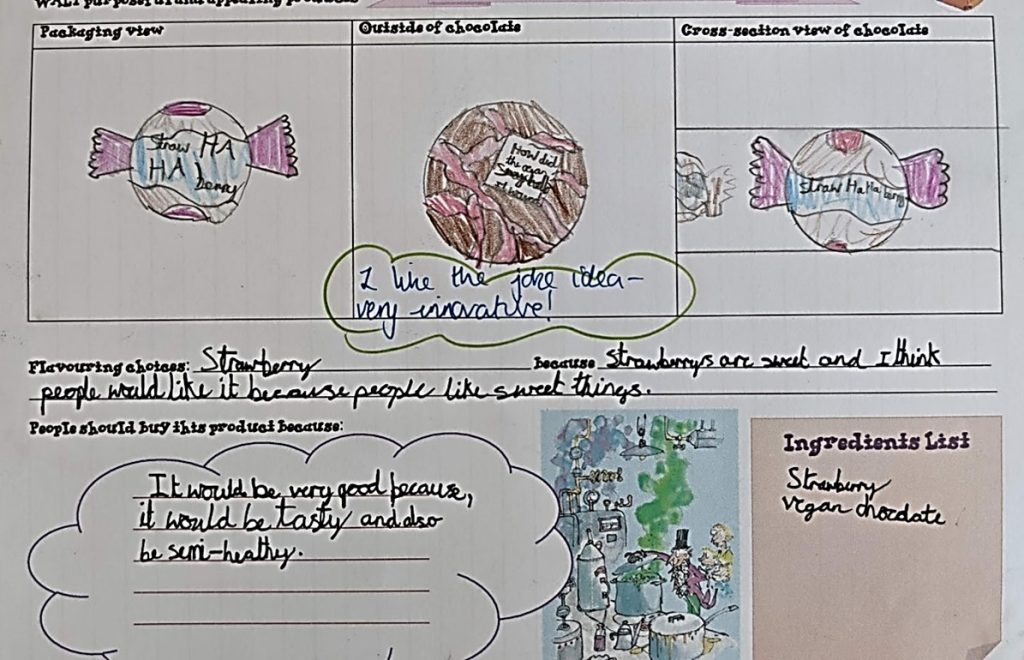
Marvelous melting science lesson
Carrying on the chocolate theme, another way to celebrate Roald Dahl Day 2024 is to retain the chocolately flavours of Mr Wonka’s factory and investigate some scientific theory.
Does all chocolate melt at the same speed? Why? There are a lot of ways to do this which you can either direct yourself or hand over to your class to plan.
For instance: which brand melts quickest? Does milk chocolate last longer than white chocolate?
You could even flip this to a purpose question and challenge pupils to find the chocolate that would last longest on a hot day (i.e. which melts slowest!)

More Charlie and the Chocolate Factory ideas
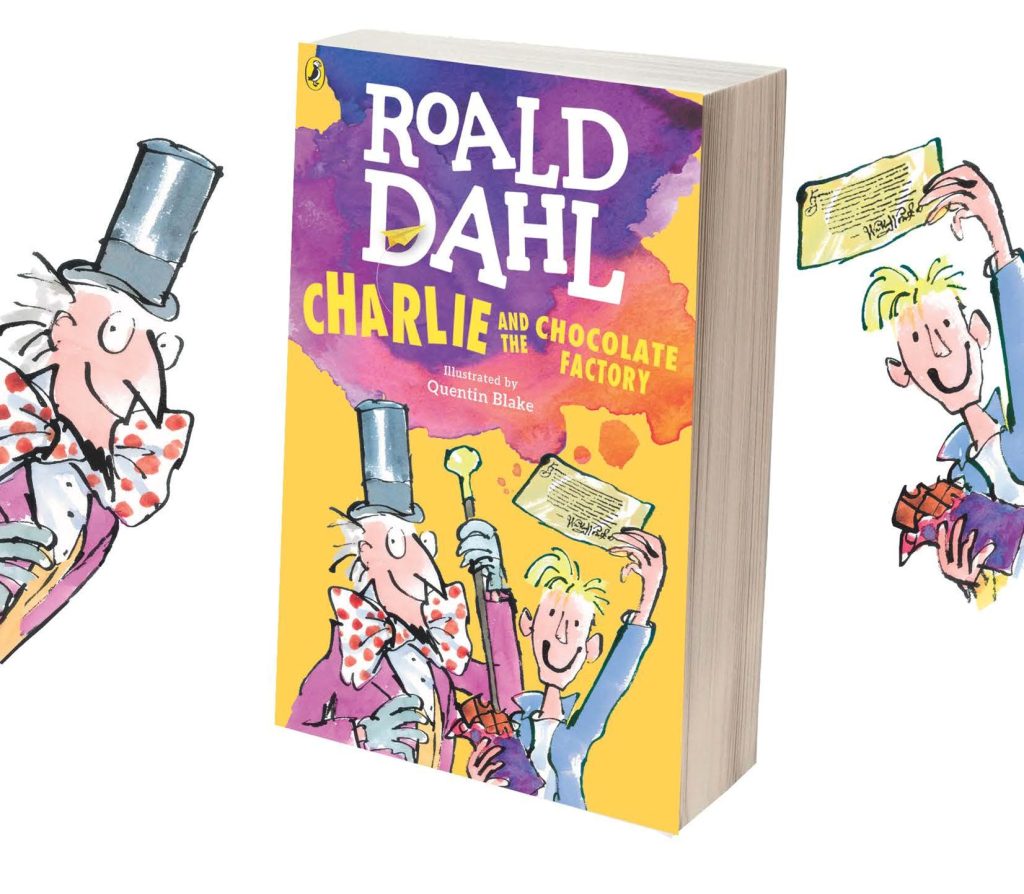
English and PSHE lessons
This lesson plan pack contains six full lessons using Roald Dahl’s Charlie and The Chocolate Factory to explore English and PSHE.
There are plenty of activities and ready-made resources to suit KS2 (and some of KS1), together with extracts from the text.
Get children to explore writing from a different perspective, express their views and listen to others, indentify good and poor behaviours and use persuasive language to good effect.
Discover the science behind popping candy
In this lesson from Sue Martin it’s up to children to test whether Willy Wonka’s latest idea could have potentially explosive results.
Children will discover the science behind popping candy, and test whether or not it might have any unexpected side effects.
Students will explore:
- Reversible and irreversible changes to materials and how to apply this knowledge
- Investigative techniques to solve a problem
Boy and Going Solo ideas
The Boy himself
As well as a wealth of giganticus stories, Roald Dahl’s books include two autobiographical tales – Boy and Going Solo. Your class may know Charlie, Matilda, James or Mr Fox very well indeed, but how well do they know Roald Dahl himself, asks Adam Jevons-Newman.
Did they know he survived a plane crash? Or about The Great Mouse Plot? Perhaps they didn’t know that his ideas for Charlie and the Chocolate Factory came from his own childhood as a chocolate taster!

The Great Mouse Plot (a chapter in Boy but also previously printed as its own book) is a fantastically darksome episode in Dahl’s schooling. Poor Mrs Pratchett (although Roald Dahl may not think that) is in for an unexpected tail (!) when she puts her hand into her sweet jar.
These incidents are great starting points for your pupils’ own semi-autobiographical writing, and could provide opportunity to tell a tall and fantastical story that Roald Dahl would be proud of.
What’s the funniest or silliest thing that’s ever happened to them? How could they use that as a starting point for a fictional story?
Host a debate
Perhaps children could also debate Roald Dahl’s actions and their own views – was putting a mouse in the sweet jar something that Mrs Pratchett deserved, or was young Roald in the wrong?
In interview footage, those who knew Roald Dahl well felt the aftermath of receiving the cane at school (as punishment for being found out) had a lasting impression on him.
Children may also be saddened to hear about the tragedy that befell Roald Dahl’s own childhood, losing both his sister and his father.
An author renowned for the most incredible words, Roald talks about being left ‘literally speechless’ at this time. Dahl also moved away from home to be educated at Repton, in Derbyshire.
How can stories help us understand the sad things that happen in life?
Having found out so much about his childhood from reading excerpts of Boy, you can ask children to write a school report for Roald Dahl.
What do they think his teachers would say about him? Children could get into role as Roald and interview one another, or pretend that they’re teachers dealing with the mischievous youth – what would they tell his parents?
Turn memories into creative fiction
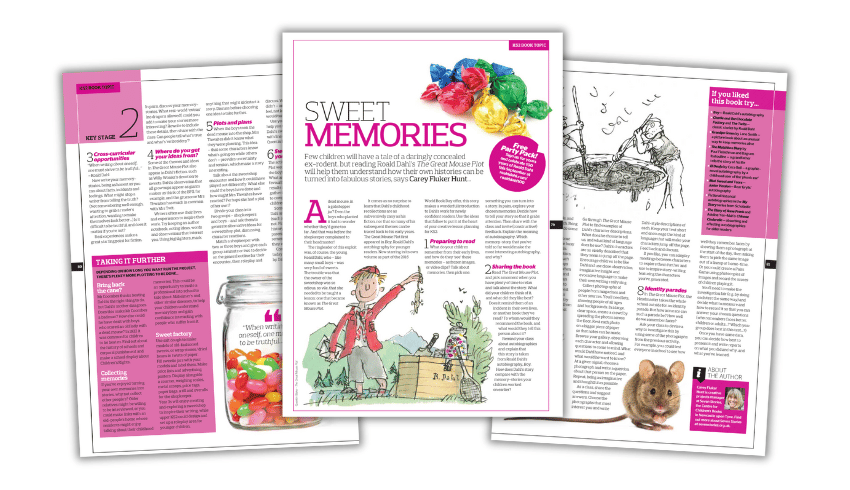
The Great Mouse Plot was one of the stories from Roald Dahl’s childhood autobiography, Boy. Dahl and his friends pranked the local sweet shop owner by placing a dead mouse in a jar of sweets. They were duly caught, and caned by their headmaster.
Carey Fluker Hunt’s book topic explores memories, and fictionalising them for engaging creative writing.
The Giraffe, The Pelly and Me ideas
In the sublime book The Giraffe and the Pelly and Me, we meet Billy, who befriends the Ladderless Window Cleaning Company.
The fantastic trio of window cleaners and Billy embark on a new business venture, eventually preserving the Duchess’ diamonds.
As a reward for the brave deeds for the Duchess, the grateful Duke of Hampshire gifts Billy the opportunity of his dreams: to open his very own sweetshop and revitalize ‘The Grubber’.
Much like Charlie’s Chocolate Factory, The Grubber plays home to some of the most diddly goodies you could imagine.
Create a remarkable product
So, what flavoury-savoury goodies would your class stock up their Grubber with? In this activity, children will uncover the powers of their descriptive writing and imagination.
Challenge pupils to create a remarkable product of the most lickswishy taste! As well as describing the aesthetics of the product, can children describe the experience of eating it?
They do this by bringing in all of their senses – describing first the appearance, then its aroma as well as its taste, texture, and perhaps any sounds it makes!
This idea can be taken further by moving into some persuasive drama or writing.
Challenge pupils to create a radio advert, advertising The Grubber and/or the latest delectable creation. They could even act out the experience of gobbling their Grubber goodies.
The BFG ideas
Gobblefunk your vocabulary
Don’t forget to gobblefunk some words, just like Roald Dahl himself (especially with his beloved character, the BFG). I don’t mean to leave you feeling biffsquiggled, but Roald Dahl infamously coined over 500 words across his books.
Some of those words may be totally flushbunking (and make no sense whatsoever) but a great place to start is sharing some of Roald Dahl’s words, undefined, and challenging pupils to define them!
Why not create your own Roald Dahl Day words too? Hopefully you’ll come up with something truly swashboggling!
You could create your own dictionary pages just like the Roald Dahl dictionary itself.
Why not challenge the children to see how many of Roald Dahl’s words they can use during Roald Dahl day. There could even be a prize for the winner!
Another challenge would be to embed your new vocabulary into a contextual sentence, building on reading skills by challenging peers to work out the meaning ‘in context’. Children especially love trying this out on staff!
Similes and metaphors
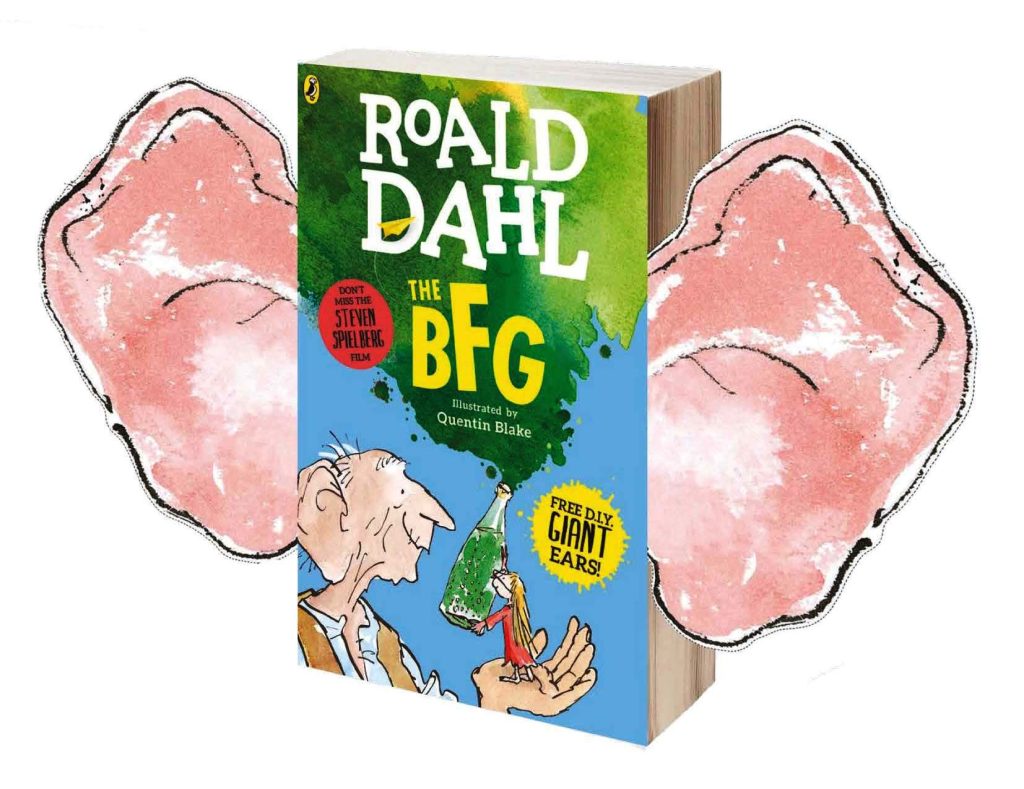
Talk with your class about how we can deal with bullies, then use the activities and worksheets in this KS1 and KS2 BFG-themed Roald Dahl lesson plan to create your own description of a bully that uses similies and metaphors to great effect.
Revolting Rhymes ideas
Revelling in Revolting Rhymes
The 1982 book Revolting Rhymes reimagines a number of well-known stories including The Three Little Pigs with some rather unexpected twists in the tale.
Using one of these rhymes as your inspiration, how could you flip (and rhyme) another popular tale? Perhaps your class could even take one of their favorite Roald Dahl books and make it revolting!
Maybe Miss Trunchbull prevails? Maybe Charlie doesn’t get the factory? What if the Giant Peach doesn’t end its journey so deliciously?
Children can restructure and repurpose these and other popular tales, perhaps telling them as extensive rhyming verses.
They could also try other poetic forms – maybe an Ode to Willy Wonka or a Haiku to reflect the fate of Veruca Salt?
Rhyming poetry
Roald Dahl took traditional fairy stories and turned them into wonderfully wicked Revolting Rhymes, and in this lesson plan, Dave Lewis shows how, with a structured approach, you can help your class to do the same.
Students will explore:
- What makes a poem sound like a poem
- How to find rhyming words for your poem (and invent rhyming words if you can’t)
- How to turn a well-known story into a poem
George’s Marvellous Medicine ideas
Sassy similies
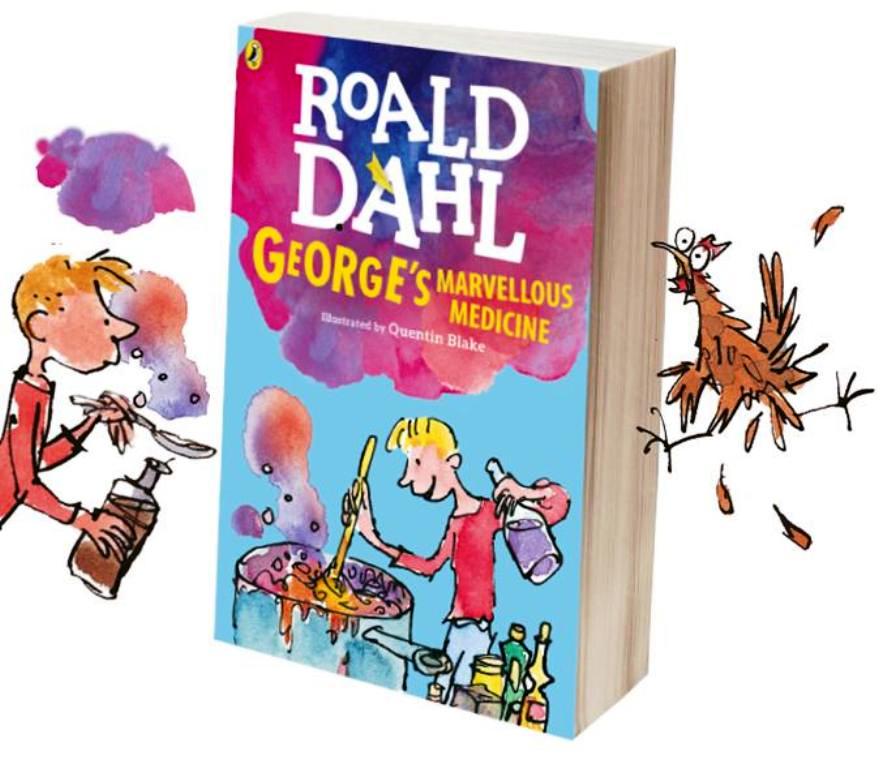
Use the worksheet included in this lesson plan to encourage KS2 children to come up with sassy similies. Then move on to helping them compose some exciting writing, before turning to performance and how to bring texts to life through reading.
Create chemistry concoctions from household products
Stir up kids’ scientific curiosity with a fizz and pop by mixing everyday items like George from George’s Marvellous Medicine, with this idea from Deborah Herridge.
This is a science experience based on trial and error and having a go, with close observation and recording. There is, of course, a lot to be learnt about how materials behave along the way, but the end result is flexible.
Most of these activities can be made more or less challenging depending on the age of the children or how much emphasis you place on accurately measuring and recording.
Layers of fun
George’s medicine for his gran is a liquid so let’s start there. We can talk about what makes a liquid liquid, how it is different from a solid, and whether all liquids are the same.
Not all of them mix together completely. Give children a range of typical kitchen liquids, including cooking oil and water. Oil is less dense than water so will always float on top.
Ask children to pour some oil into a plastic tumbler half full of water. What do they notice? Drop a few beads of food colouring onto the top of the oil. What happens?
Push the drops further into the oil. What happens when they reach the water? Food colouring is water based so will not mix with oil; it will stay in coloured droplets until it is in contact with the water where it will mix completely.
Cabbage magic
I love the magic of seeing colours change in a science experiment. Making natural indicators (chemicals that change colour when mixed with acids or alkalis) provides a host of opportunities to investigate this. For a ‘wow’ starter activity, you’ll need some liquid universal indicator.
You can get this online or from your local secondary school. Mixed in water with an acid such as lemon juice, the indicator turns red. It will be green if the solution is neutral and blue if alkaline. Start with a lemon juice solution (red) then add some commercial anti-indigestion medication. Swirl it around and watch the rainbow of changes as the alkaline medication gradually neutralises the acid.
Red cabbage makes a fabulous homemade acid indicator. It contains anthocyanin, a pigment that changes depending on whether it is in an alkaline or acid solution.
The method
Chop up some fresh red cabbage and steep it in hot water for about half an hour or until the water turns dark purple. Adding this indicator to an alkali such as bicarbonate of soda turns it green, while an acid such as vinegar will turn it a deep pink.
Experiment with cream of tartar, sodium bicarbonate, soap, dishwasher powder (under close supervision as it is quite strong), lemon juice or white vinegar. Stay safe – avoid kitchen cleaners and bleach! Challenge yourself – what colour do you think the indicator will show when mixed with egg whites?
You can also use cabbage indicator for a type of ‘magic painting’. Make a ‘wash’ with the cabbage water over some heavy white paper and allow it to dry slightly. Now paint a design using lemon juice. This will turn the pale purple paper a shocking pink. Rubbing a wet paintbrush over a dishwasher tablet and using this as paint will create a vibrant jade green.
Fizz and pop
When an acid like vinegar is mixed with bicarbonate of soda or other alkalis, there is a chemical reaction.
This is a bit like the chemical equivalent of an anagram, with atoms moving around like letters in a word. The molecules (particles) mix together and swap atoms around to make different molecules – in this case producing three different substances where there were originally two, one being the gas carbon dioxide.
You can capture this gas by mixing the chemicals in a narrow-necked bottle and quickly covering the bottle opening with a balloon.
As the gas is produced by the chemical reaction, it will inflate the balloon – just as George’s original medicine blew his Grandma up.
You could draw Grandma Kranky’s face in pen on your balloon and watch it grow as the balloon inflates. Who can make the biggest granny?
Record keeping
George couldn’t remember how to make his first medicine again because he didn’t write anything down. How will we remember all of our various concoctions? Can we be systematic in our recording? What happens if we increase the amount of acid, or increase the amount of alkali? What is the mixture that makes the most gas?
Another sort of fizz is that produced by yeast as it grows. Try mixing dried yeast with different proportions of warm water and sugar. What combination produces most growth in this living organism? If you mix your yeast, sugar and water in a measuring cylinder, it becomes easy to compare how far the yeasty foam has travelled up the scaled container.
The final challenge
Now we’ve experimented with all of these marvellous changing materials, it’s time for a challenge. Here are a few suggestions
- create a medicine that has three layers, one of which needs to fizz
- a medicine that changes colour when stirred
- a concoction where two liquids added together makes a liquid and a solid
- a potion that turns egg whites green
Make a foaming fizzy potion
Inspired by Roald Dahl’s terrific tale, try a class experiment from George’s Marvellous Experiments (£7.99, Puffin).
What you’ll need:
- Bicarbonate of soda
- Washing-up liquid
- Lemon juice
- Food colouring (optional)
- A plastic cup or mug
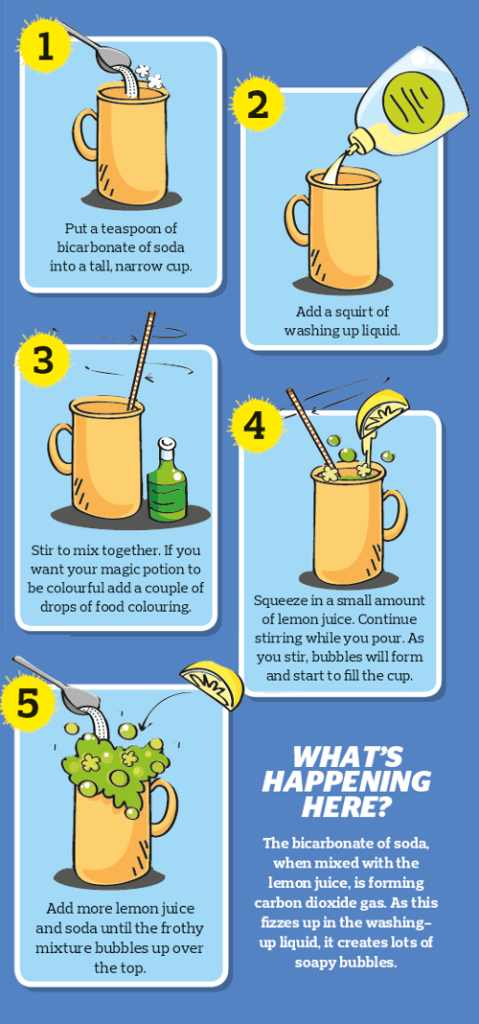
Estimating, decanting and measuring
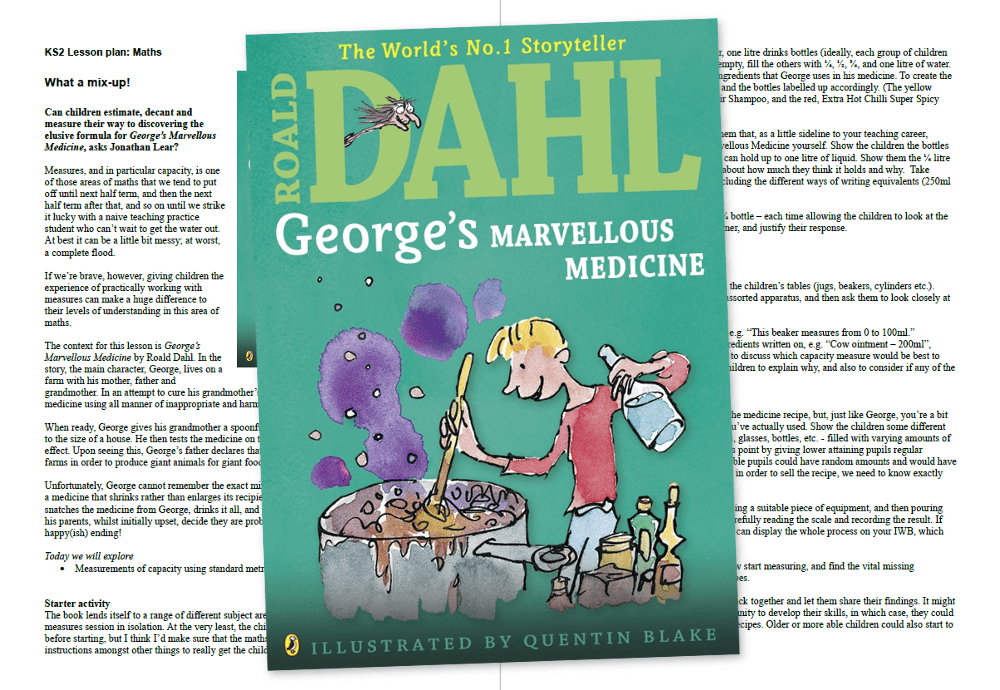
Can children estimate, decant and measure their way to discovering the elusive formula for George’s Marvellous Medicine?
This three-page document from Jonathan Lear contains a lesson plan that explores measurements of capacity using standard metric units.
Write wacky recipes
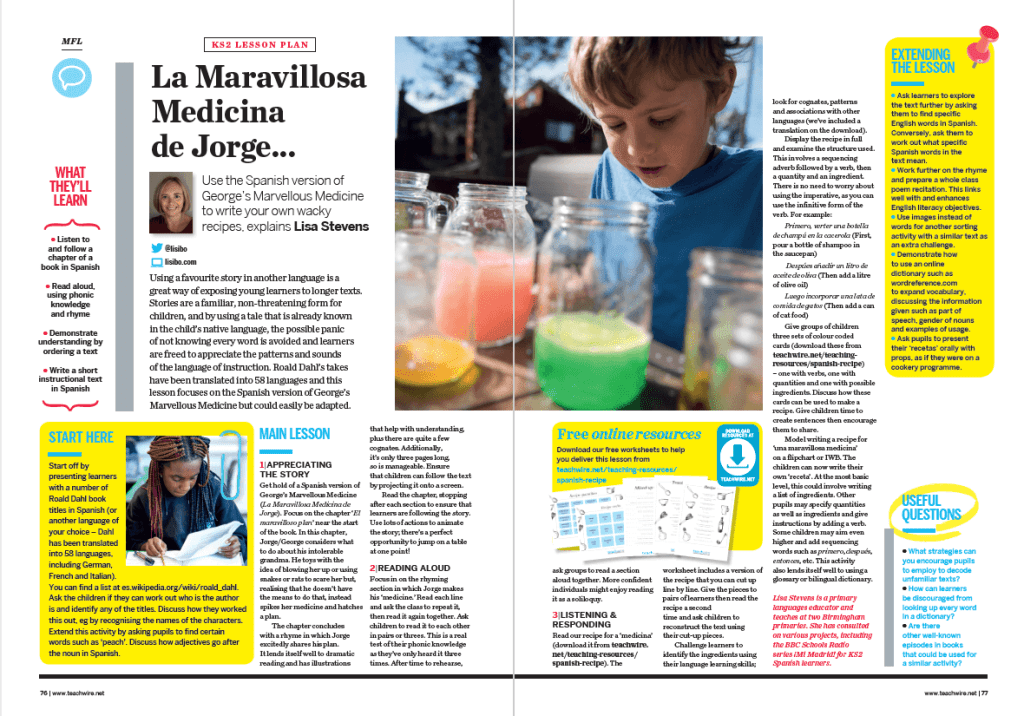
Using a favourite story in another language is a great way of exposing young learners to longer texts. This KS2 Spanish lesson from Lisa Stevens will see children writing a short instructional text in Spanish featuring verbs, quantities and ingredients.
James and the Giant Peach ideas
Reading aloud with James and the Giant Peach
Revisit this children’s classic with these ideas and activities by Martin Galway from Herts for Learning’s primary English team.
The word ‘peculiar’
Here’s a short sequence from the opening of chapter 2 of James and the Giant Peach:
For now, there came a morning when something rather peculiar happened to him. And this thing, which as I say was only rather peculiar, soon caused a second thing to happen which was very peculiar. And then the very peculiar thing, in its own turn, caused a really fantastically peculiar thing to occur.
Here’s another from chapter 3:
It was at this point that the first thing of all, the rather peculiar thing that led to so many other much more peculiar things, happened to him.
‘Peculiar’ is a word that we might want to linger on for several reasons because it:
- might be outside of the children’s working vocabulary
- is reasonably easy to define in terms that the children will understand
- has a dual meaning, which is always more fun
- is quite satisfying to say in a range of voices
- has a surprising etymology if you are not familiar with its Latin roots
Synonyms and antonyms
Another compelling reason to linger here is that the children are not only likely to encounter and use ‘peculiar’ again, they are certain to. The book is riddled with it:
Something is about to happen, he told himself. Something peculiar is about to happen any moment. [chapter 6]
‘Very peculiar,’ the Centipede said. ‘Very, very peculiar indeed…” [chapter 12 – more on this later]
So it’s worth a little of our time. What might we do? Well, we can explore synonyms and antonyms of course. We might provide children with a range of related and unrelated words and ask them to sort these into the following table:

The selected words reflect the use of the word in the book; keep in mind that peculiar can also mean ‘particular’ or ‘particular to’.
Perhaps more fun though would be to note some of the uses in the book and arrange these to form a Peculiarity Scale. Taking the earliest references and putting them onto card, we might end up with something like this:
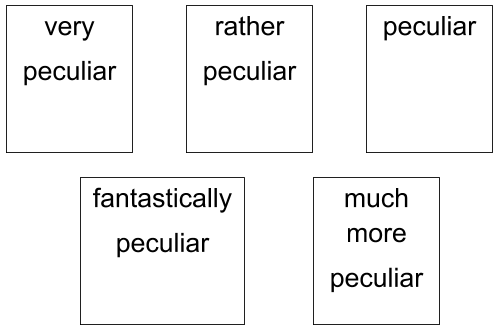
It should not take the children too long to arrange these cards into a parade of peculiarity, ranging from least to most peculiar. The children might want to add their own terms using words for emphasis to complement our root word. Once we have a working scale, we can use it to explore the relative peculiarity of every day events:

The less plausible fib:

Then we can rank the events in the book. They’re generally quite peculiar.
Expressive reading
The opening chapters of the book provide many opportunities to demonstrate the pleasures (and benefits) of a juicily expressive read.
Plenty of books have evil or strange characters for us to twist our voices around, but here the words the characters say are playful (or playfully horrid) and are arranged in such ways as to give your sense of rhythm, phrasing, and pacing a good workout.
Let’s take a brief look at some early opportunities.
Expressive reading opportunities
| Chapter 1 | First, we set our scene. This opening section lends itself to classic narration of a truly unfortunate series of events. Take a moment to mourn the abrupt departure of both mum and dad, curse that rampant rhino, and then whisk James to the hellish confines of the house of Sponge and Spiker. |
| Chapter 2 | Enter the aunts! The first challenge here is how to differentiate such similarly grotesque characters. The second, real-life challenge of a classroom read aloud: how to move between the two voices without mixing them up. This is further complicated by the rhyming sparring session between the two aunts: an early form of rap battle if you will. This part is worthy of prior practice – its rhythms, like the book itself, somewhat offbeat and so somewhat tricky to perform. |
| Chapters 3 and 4 | The longer you linger here – particularly in light of modern safeguarding sensibilities – the more troubling it all gets. A pacey read is advisable but allow yourself the chance to relish the closing speech of the old man. Allow your voice to become more and more animated, as if you are losing yourself in your own wonder at the magic that you are describing. Make sure not to disturb, too greatly, any of your more sensitive listeners in the process. |
| Chapters 5 through to 8 | More classic storytelling and more opportunities to indulge your by-now-perfected Sponge and Spiker. |
| Chapter 9 | Here we have a chance to change tone and gear. How will you bear witness to both the eeriness and the beauty of James’ exile in the moonlit garden? The soft sibilance of Dahl’s word pairings (soft and silver) guide us to a hushed delivery in readiness for things to get truly peculiar. |
| Chapters 10 and 11 | Enter the peach. Might we break out for a little bit of drama? Could that play tunnel serve as the portal to the heart – or stone more accurately – of the peach? What will we find there? Time to meet our constant companions for our flight from the aunts. |
Centre stage for Centipede
Now, with the children properly warmed up, and well into the novel, all of our work around voice might be brought to bear on my favourite character in the book.
Chapter 12 is a humdinger for letting go of the reins and letting the children loose in creating their own peculiar voices for the gathering of creatures that live in the peach.
We might share chapter 12 and ask children for their early opinions, preferences, and questions relating to these new characters.
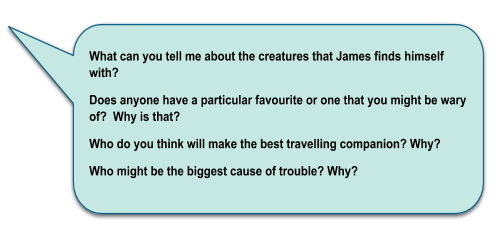
Encourage children to make connections between what they are hearing/reading and what they know about character, behaviour, and relationships from other texts and real life.
For my part, I am drawn to Centipede (perhaps because his voice and gestures sprang fully formed into my head as soon as I had read a couple of his lines) but I have to give special mention to Earthworm. Centipede would be nothing without him.
Character clues
By exploring the character clues that Dahl drops and weaves around Centipede’s dialogue, we can provide children with performance pointers so that they can develop their own expressive reading of the speech in the story, bring it to life through drama, and perhaps improvise extended scenes.
This scene for example provides an opportunity to model the attention we might pay to particular cues, or how we might anticipate challenges in preparing to do justice to a character:
‘I have a lot of legs,’ the Centipede answered proudly ‘And a lot of feet. One hundred, to be exact.’
‘There he goes again!’ the Earthworm cried, speaking for the first time. ‘He simply cannot stop telling lies about his legs! He doesn’t have anything like a hundred of them! He’s only got forty-two! The trouble is that most people don’t bother to count them. They just take his word. And anyway, there is nothing marvellous, you know, Centipede, about having a lot of legs.’
‘Poor fellow,’ the Centipede said, whispering in James’s ear. ‘He’s blind. He can’t see how splendid I look.’
I might say something like:
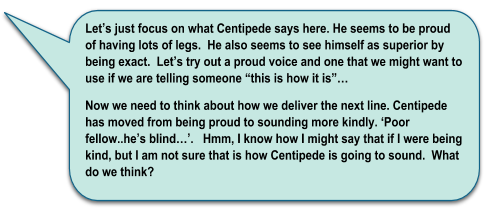
This is just one possible form of dialogue with my children, but of course we want to preserve the magic of our read aloud sessions so any classroom chat should feel organic. What we want to do, now and then, is prompt, build on, and clarify the children’s ideas
The power of reading aloud
What we are doing, through the power of the read aloud session, is unobtrusively helping all of our children – regardless of their current status and identity as readers – to see that to properly engage with the text, we want to hear, and see, and attend to its prompts and clues, and to let them shape the way we read, as we read.
In this way, we might fully do justice to the behaviours peculiar to Centipede and his peculiar friends.
Comprehension and fluency
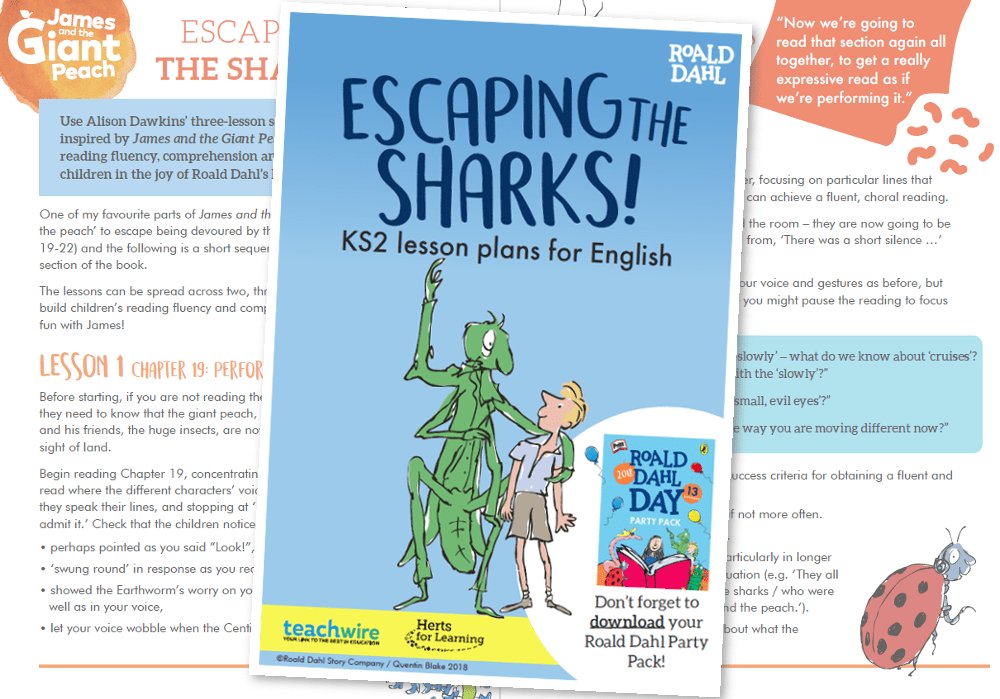
Looking for more comprehension activities? Use Alison Dawkins’ three-lesson sequence, inspired by James and the Giant Peach, to develop reading fluency, comprehension and immerse the children in the joy of Roald Dahl’s language.
KS1/2 drama lesson plan
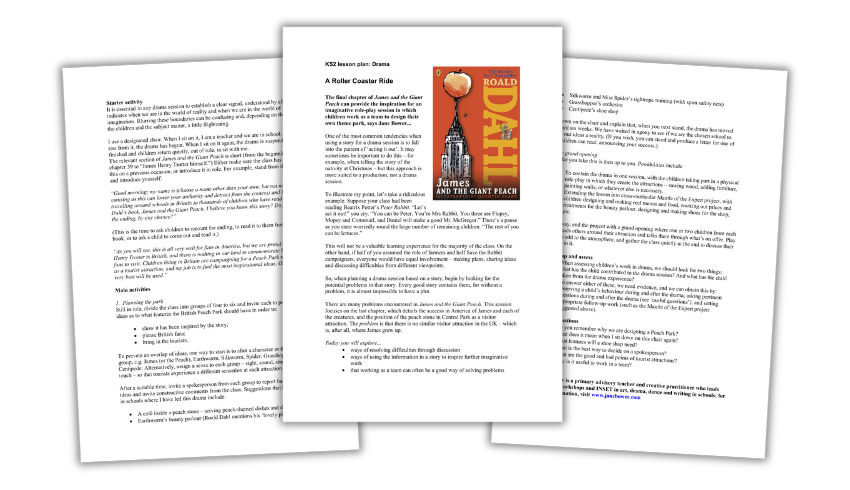
The final chapter of James and the Giant Peach can provide the inspiration for an imaginative role-play session in which children work as a team to design their own theme park, says Jane Bower.
In this lesson from Jane Bower, students will explore:
- Ways of resolving difficulties through discussion
- Ways of using the information in a story to inspire further imaginative work
- That working as a team can often be a good way of solving problems
Cross-curricular KS2 ideas
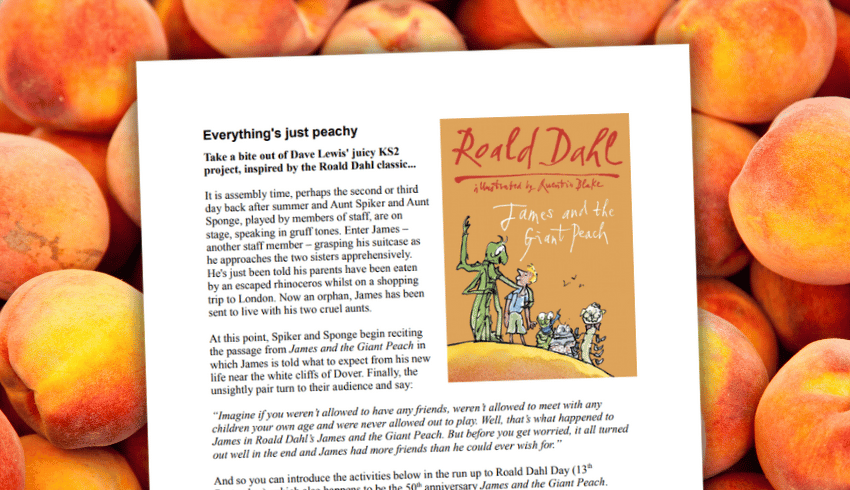
Use this James and the Giant Peach KS2 planning to teach students about the importance of friendship through a range of activities. Then look into the science of the story using real fruit.
Matilda ideas
Investigate the physics of Matilda
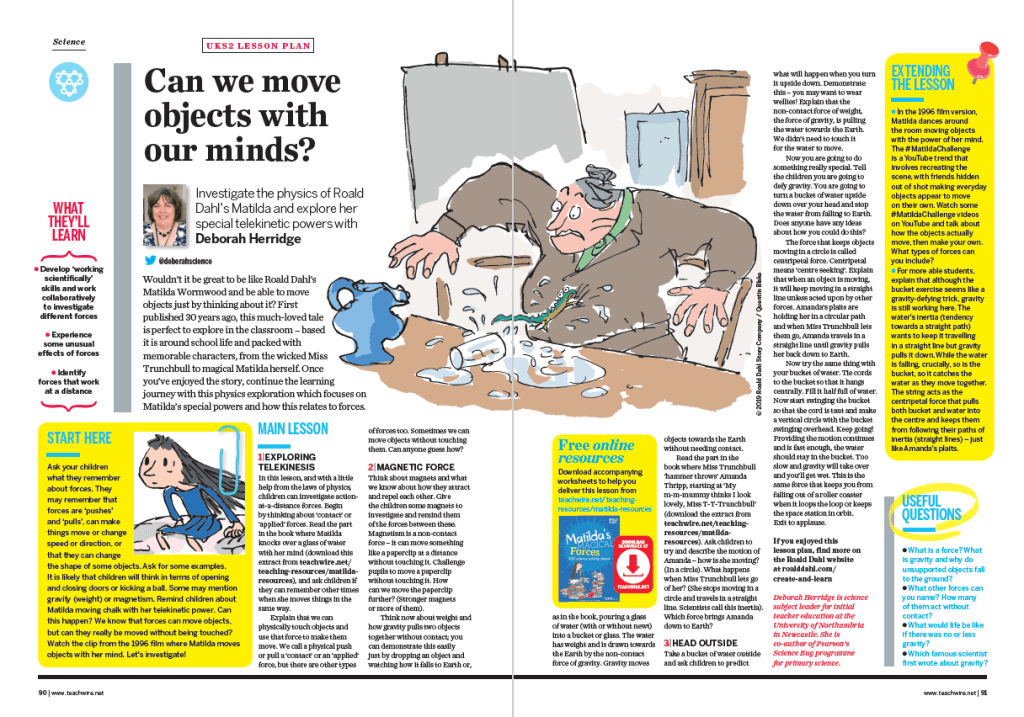
This physics exploration from Deborah Herridge focuses on Matilda’s special powers and how this relates to forces. Pupils will:
- Develop ‘working scientifically’ skills and work collaboratively to investigate different forces
- Experience some unusual effects of forces
- Identify forces that work at a distance
Even more ideas
KS2 PSHE lesson plan
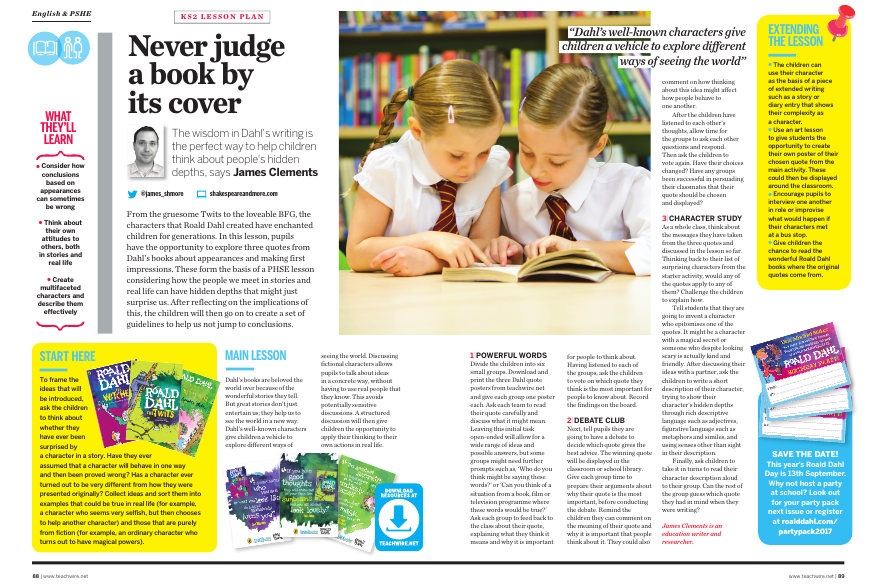
In this free KS2 PSHE lesson plan, pupils have the opportunity to explore three quotes from Roald Dahl characters about appearances and making first impressions.
These form the basis of a PSHE lesson considering how the people we meet in stories and real life can have hidden depths that might just surprise us.
Read Roald around the school
With such a wonderful library of texts, some better known and more celebrated than others, Roald Dahl Day could be the perfect time to expose children to some of Dahl’s lesser-known stories.
Why not divide up some of Dahl’s books like The Magic Finger, The Twits, Esio Trot and The Great Glass Elevator and allocate one to each teacher?
Across the day, each class could visit another teacher to enjoy an excerpt from a different Dahl book to broaden their Roald Dahl library.
As always, there’s lots of opportunities for dressing up as characters from the books.
How about creating a Roald Dahl trail around school sharing quotes and characters to immerse children in the worlds of the tales?
Sculpture lesson plan for KS1
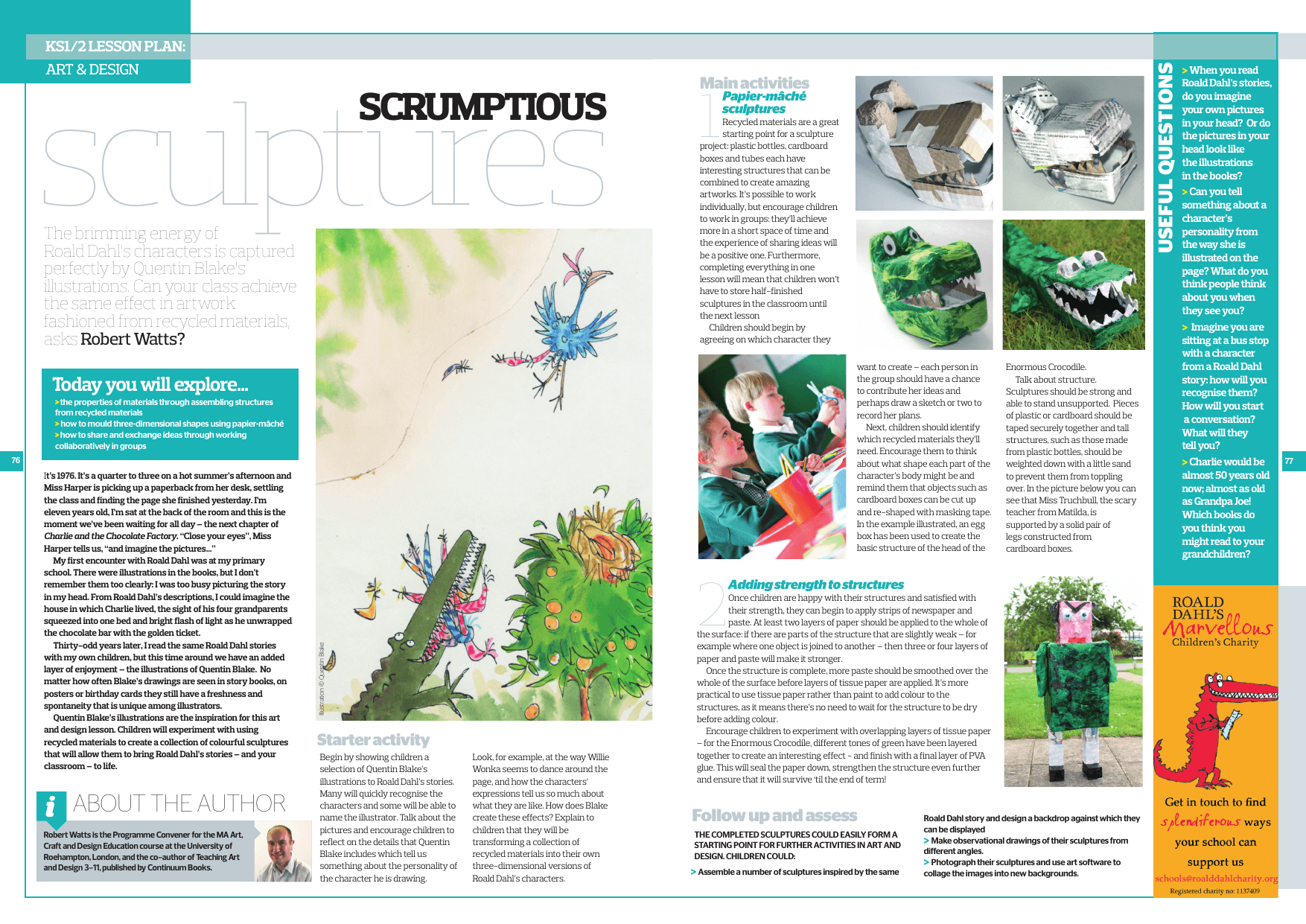
The brimming energy of Roald Dahl’s characters is captured perfectly by Quentin Blake’s illustrations. Can your class achieve the same effect in artwork fashioned from recycled materials.
In this KS1 art lesson from Robert Watts, students will explore:
- The properties of materials through assembling structures from recycled materials
- Moulding three-dimensional shapes using papier-mâché
- Sharing and exchange ideas through working collaboratively in groups










